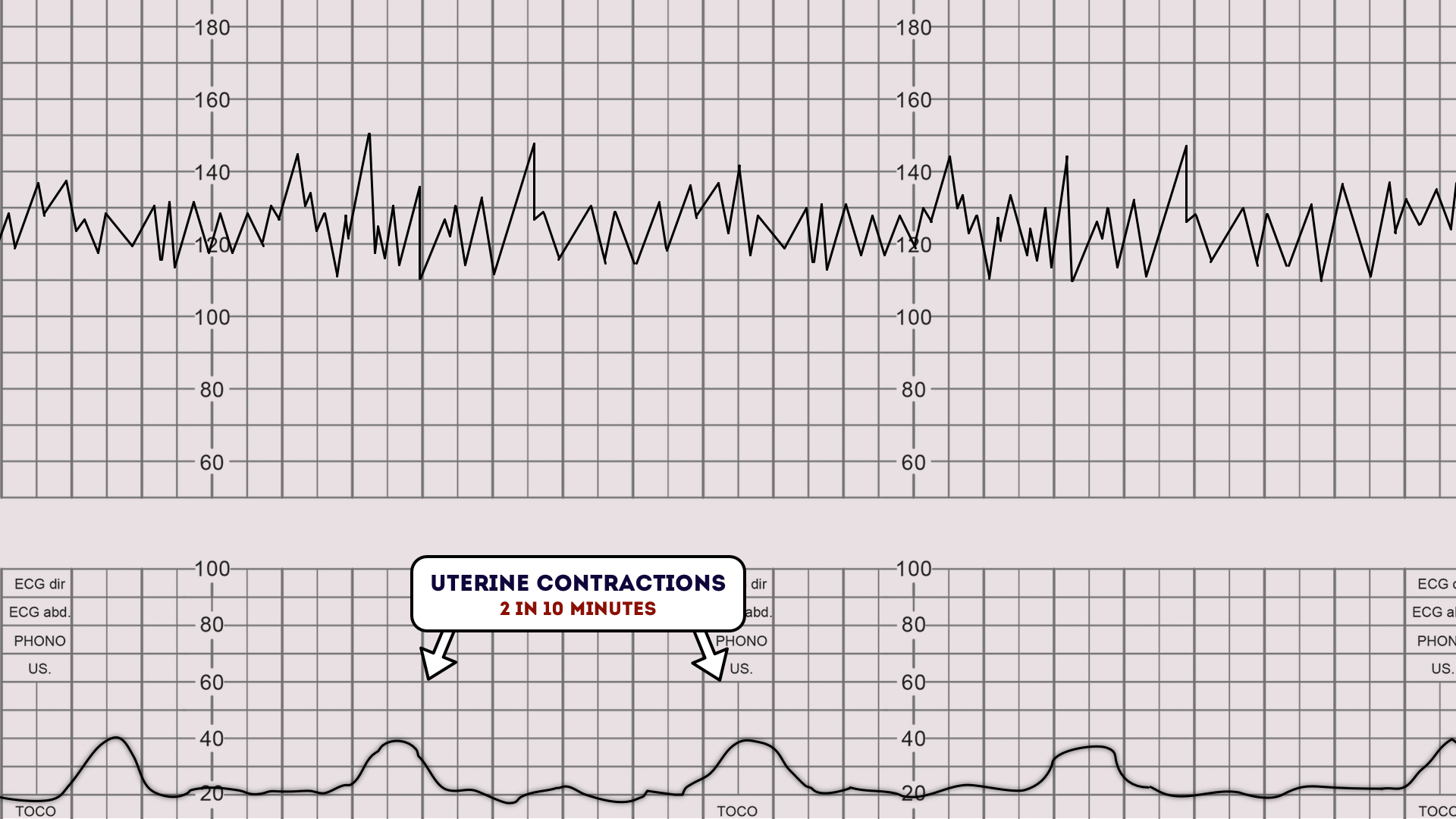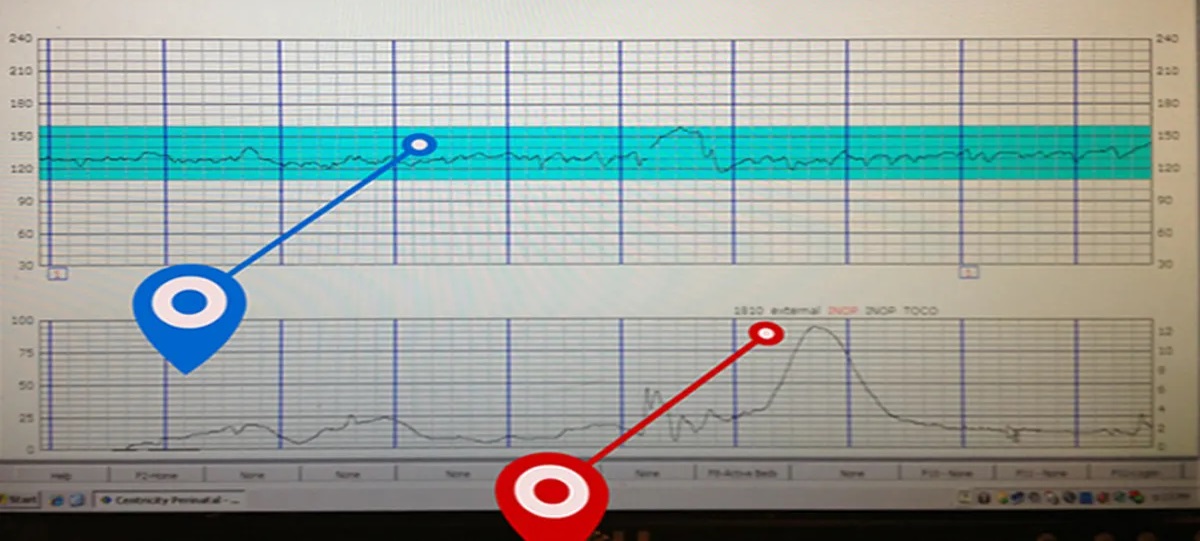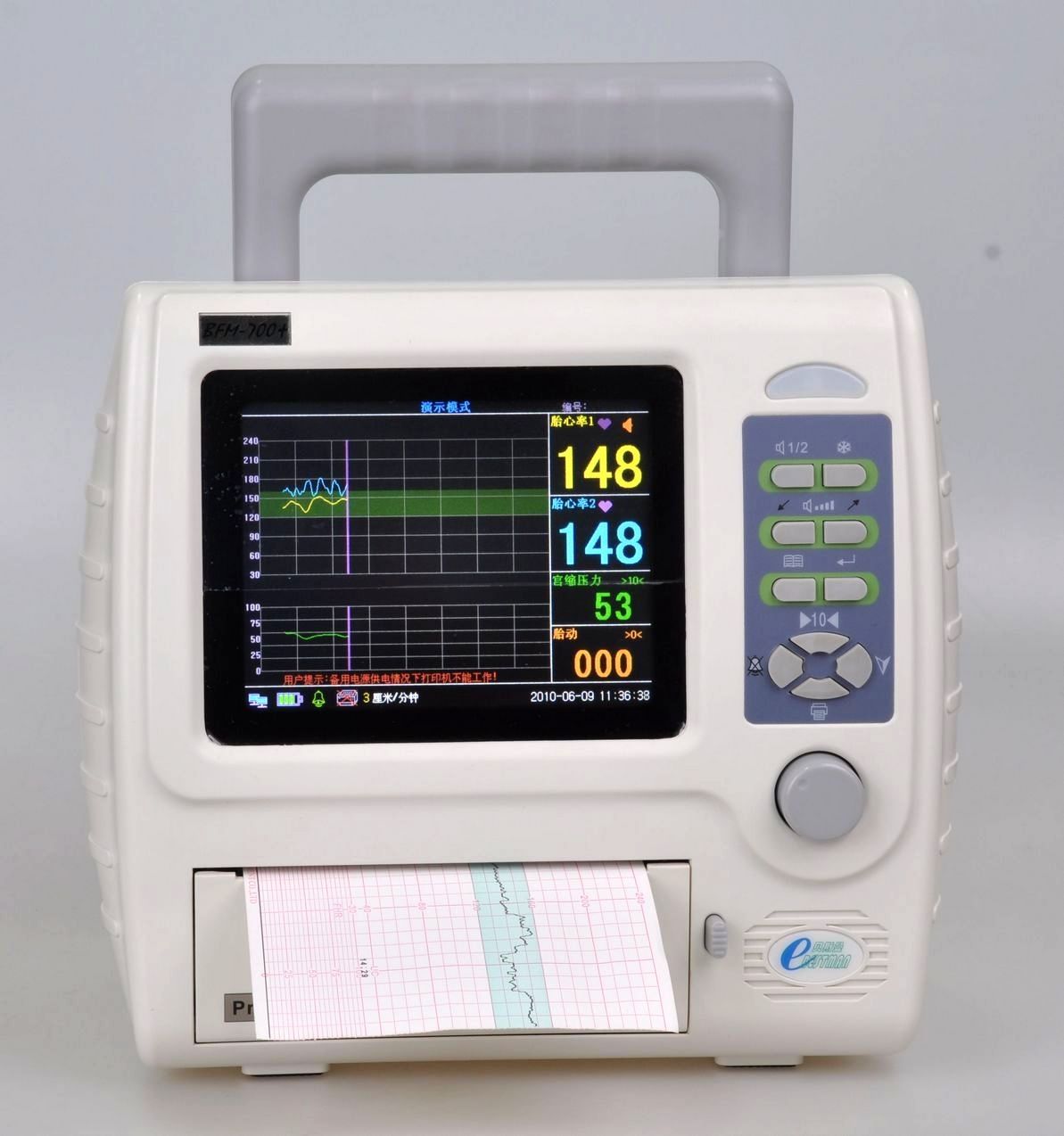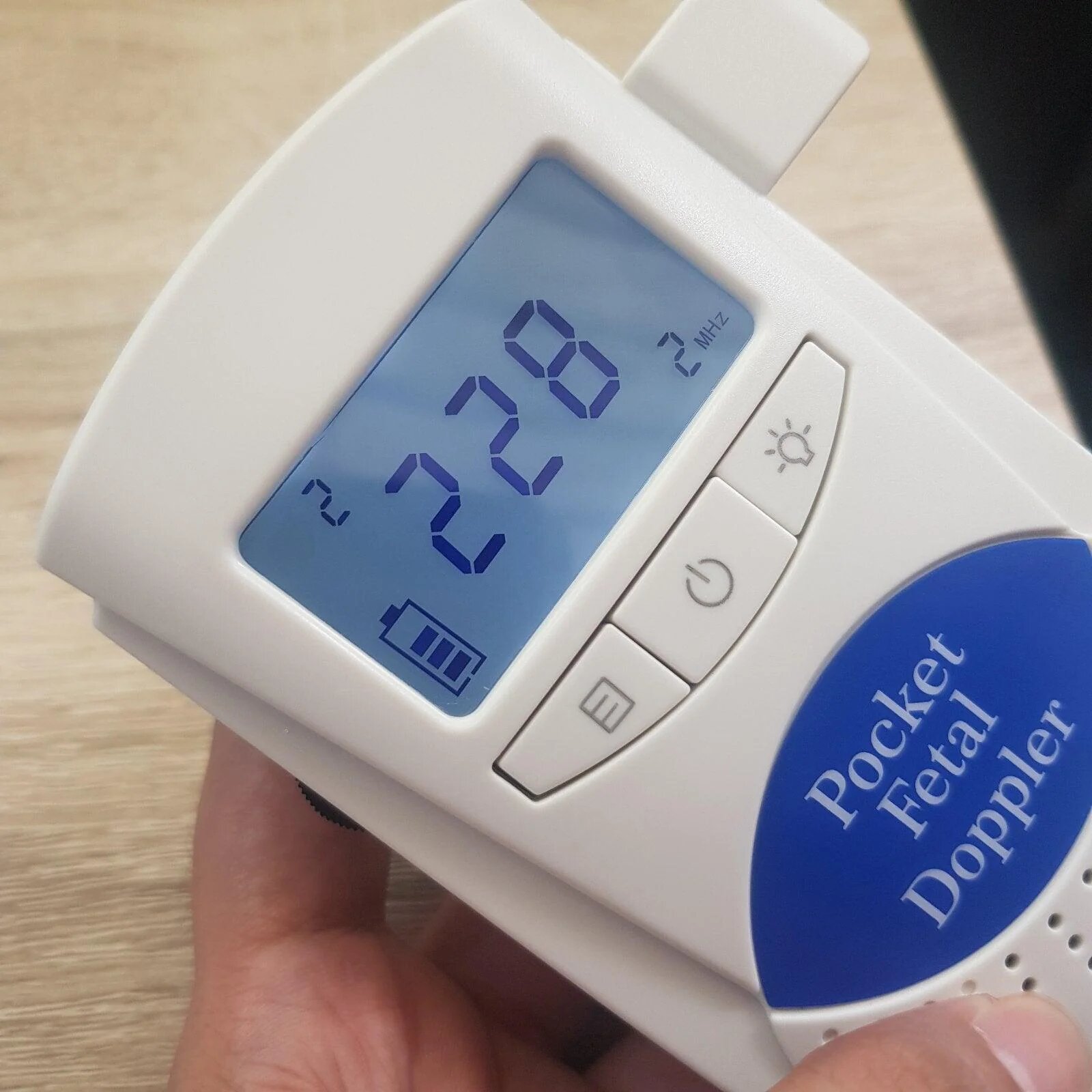Introduction
A fetal monitor is a vital tool used during pregnancy to track the progress of labor and the well-being of the baby. It records and measures various parameters, one of the most important being contractions.
Contractions, rhythmic tightening and relaxation of the uterine muscles, play a crucial role in labor. Monitoring these contractions is essential to ensure a safe delivery and the health of both the mother and the baby. However, understanding the contractions shown on a fetal monitor can be confusing for many.
In this article, we will guide you through the process of reading contractions on a fetal monitor. We will explain the different types of contractions, provide insights on interpreting the patterns, and give you valuable tips to differentiate normal contractions from abnormal ones. By the end of this article, you will have a clear understanding of how to accurately read and interpret contractions on a fetal monitor.
Whether you are an expectant mother wanting to track your labor progress or a healthcare professional seeking to provide the best care for your patients, having the knowledge to interpret contractions is crucial. So, let’s dive in and unravel the mystery behind reading contractions on a fetal monitor!
Understanding Contractions on a Fetal Monitor
Before we delve into reading contractions on a fetal monitor, it’s important to have a basic understanding of what contractions are and why they are monitored. Contractions are the tightening and relaxation of the uterine muscles during labor. These contractions help to push the baby down the birth canal and eventually lead to childbirth.
A fetal monitor measures and records the intensity, frequency, and duration of contractions. It provides valuable information about the progress of labor, the well-being of the baby, and any potential complications that may arise. By monitoring contractions, healthcare professionals can assess the effectiveness of labor, detect any abnormalities, and make informed decisions regarding the management of labor.
Contractions on a fetal monitor are typically displayed as peaks and valleys on a graph. The intensity of the contractions is shown on the y-axis, while the time is represented on the x-axis. Understanding the pattern of these contractions is essential for accurately interpreting the information provided by the monitor.
There are two main types of contractions that are commonly seen on a fetal monitor:
- 1. Uterine Contractions: These contractions are responsible for dilating the cervix and pushing the baby down the birth canal. They are typically felt as a tightness or squeezing sensation in the abdomen. Uterine contractions are measured in terms of their frequency, duration, and intensity.
- 2. Non-Uterine Contractions: These are contractions that are unrelated to labor. They can include contractions of the abdominal muscles or movements of the baby. Non-uterine contractions are usually milder and shorter in duration compared to uterine contractions.
Being able to distinguish between uterine and non-uterine contractions is crucial in accurately assessing the progress of labor. It ensures that the data collected from the fetal monitor is a true reflection of the contraction patterns and allows healthcare professionals to make informed decisions regarding the management of labor.
Now that we have a solid understanding of what contractions are and their significance, let’s move on to the next section where we will discuss how to interpret the contractions seen on a fetal monitor.
Types of Contractions
Contractions on a fetal monitor can vary in their characteristics and patterns. Understanding the different types of contractions is essential for accurately interpreting the information provided by the monitor. Let’s explore the two main types of contractions seen on a fetal monitor:
- Regular Contractions: Regular contractions have a consistent pattern, with similar intervals between each contraction. These contractions are a sign that labor is progressing. They usually increase in frequency, duration, and intensity as labor advances. Regular contractions indicate that the uterus is effectively working to dilate the cervix and push the baby down the birth canal.
- Irregular Contractions: Irregular contractions, also known as Braxton Hicks contractions or false contractions, are not as predictable or rhythmic as regular contractions. They can occur at any time during pregnancy, but they are more commonly experienced in the third trimester. Irregular contractions are usually milder and shorter in duration compared to regular contractions. They do not indicate that labor has begun or is progressing.
It’s important to note that Braxton Hicks contractions are a normal part of pregnancy and serve as a preparation for the body for labor. These contractions help to tone the uterine muscles, increase blood flow to the placenta, and facilitate the baby’s positioning for birth. However, they should not be mistaken for true labor contractions.
When monitoring contractions on a fetal monitor, it is essential to differentiate between regular and irregular contractions. This can be done by observing the pattern, intensity, and frequency of the contractions. Regular contractions will have a consistent pattern, while irregular contractions will lack a consistent rhythm.
Now that we have explored the different types of contractions commonly seen on a fetal monitor, let’s move on to the next section where we will discuss how to interpret these contractions in order to assess labor progress and identify any potential issues.
Interpreting Contractions
Interpreting the contractions seen on a fetal monitor is an essential skill for healthcare professionals and expectant mothers alike. By understanding the characteristics and patterns of contractions, one can assess the progress of labor and identify any potential issues that may arise. Here’s how to interpret contractions on a fetal monitor:
1. Frequency: The frequency of contractions refers to how often they occur. It is measured by counting the time from the beginning of one contraction to the beginning of the next. Regular contractions typically occur at regular intervals, while irregular contractions may have inconsistent time gaps between them.
2. Duration: The duration of contractions refers to how long each contraction lasts from the beginning to the end. Regular contractions tend to have a consistent duration, while irregular contractions may vary in length.
3. Intensity: The intensity of contractions refers to the strength or force of the contraction. It is often measured on a scale from mild to strong. Regular contractions tend to increase in intensity as labor progresses, while irregular contractions may not reach high levels of intensity.
4. Baseline: The baseline is the resting state of the uterus between contractions. It is the period of minimal or no contractions. This is important to establish as it provides a reference point to assess the intensity and frequency of contractions.
5. Contractions Pattern: Observing the pattern of contractions is essential for understanding the progress of labor. Regular contractions typically increase in frequency, duration, and intensity over time. They may follow a predictable pattern, such as a shorter rest between contractions or longer contractions as labor progresses. Irregular contractions, on the other hand, lack a consistent pattern and may occur sporadically without a clear progression.
By carefully considering these factors and analyzing the contraction patterns on a fetal monitor, healthcare professionals can make informed decisions regarding the management of labor and provide appropriate care to expectant mothers. For expectant mothers, understanding how to interpret contractions can help them stay informed about the progress of their labor and communicate effectively with their healthcare providers.
Now that we have explored the process of interpreting contractions on a fetal monitor, let’s move on to the next section, where we will discuss the difference between normal and abnormal contractions.
Normal vs. Abnormal Contractions
When reading and interpreting contractions on a fetal monitor, it is crucial to distinguish between normal and abnormal contractions. Normal contractions are a natural part of the labor process and indicate progress towards childbirth. Abnormal contractions, on the other hand, may present potential issues that require attention. Let’s explore the differences between normal and abnormal contractions:
Normal Contractions: Normal contractions are characterized by regular patterns, increasing frequency, duration, and intensity as labor progresses. They typically follow a consistent rhythm and help to dilate the cervix, allowing the baby to move down the birth canal. Normal contractions are associated with sensations of tightening and discomfort in the abdomen. They may be uncomfortable, but they are generally manageable and have a predictable pattern of progression.
Abnormal Contractions: Abnormal contractions deviate from the typical pattern observed in normal labor. They may be overly frequent, irregular in duration and intensity, or have unusual patterns of rest and activity. Abnormal contractions can be categorized into two main types:
- Hypertonic Contractions: Hypertonic contractions are abnormally strong, prolonged, or frequent contractions that may not allow for adequate relaxation of the uterine muscles in between contractions. This can lead to reduced blood flow to the placenta and can affect the well-being of the baby. Hypertonic contractions can cause intense pain and discomfort for the mother.
- Hypotonic Contractions: Hypotonic contractions are abnormally weak or ineffective contractions that may result in a lack of progress in labor. The contractions may be too gentle, irregular, or ineffective in dilating the cervix or pushing the baby down the birth canal. This can lead to a prolonged labor or stalled progress, requiring medical intervention to augment or induce labor.
It is important to note that abnormal contractions should be evaluated and managed by healthcare professionals. If a fetal monitor shows signs of abnormal contractions, the medical team will assess the situation, consider the overall well-being of the mother and the baby, and take appropriate measures to ensure a safe and smooth delivery.
Monitoring contractions on a fetal monitor allows healthcare providers to detect any abnormalities and intervene if necessary. By understanding the difference between normal and abnormal contractions, expectant mothers can communicate any concerns to their healthcare providers and receive appropriate care and support during labor.
Now that we have discussed normal and abnormal contractions, let’s move on to the next section where we will provide valuable tips for accurately reading contractions on a fetal monitor.
Tips for Reading Contractions on a Fetal Monitor
Reading contractions on a fetal monitor can sometimes be challenging, but with a few helpful tips, you can improve your accuracy and understanding. Here are some valuable tips to consider when interpreting contractions on a fetal monitor:
- Pay attention to the baseline: Establishing the baseline, or the resting state of the uterus between contractions, is crucial. This allows you to identify any deviations from the baseline and assess the intensity and frequency of contractions.
- Observe the pattern: Look for patterns in the contractions. Regular contractions typically increase in frequency, duration, and intensity as labor progresses. Understanding the pattern can help you anticipate the progress of labor and make informed decisions.
- Use visual aids: Utilize any visual aids provided by the fetal monitor software or equipment. Graphs or charts can help you visualize the contraction patterns and identify any irregularities or abnormalities more easily.
- Coordinate with the mother: Communicate with the expectant mother and ask her about her experience. The mother’s perception and description of the contractions can provide valuable insights that complement the information from the fetal monitor. It is important to consider both objective data from the monitor and subjective experiences of the mother.
- Consider the context: Take into account the overall context of the labor progress, the mother’s medical history, and any other relevant information. This will help you make a comprehensive assessment of the situation and guide your decision-making process.
- Consult with experienced professionals: If you are unsure about any aspects of reading contractions on a fetal monitor, it is important to seek guidance from experienced healthcare professionals. They can provide valuable insights and help you understand complex situations or unusual patterns.
By following these tips, you can enhance your ability to accurately interpret and read contractions on a fetal monitor. Remember, practice and experience are key factors in becoming proficient in reading and understanding the information provided by a fetal monitor.
Now that we have covered these helpful tips, let’s summarize our key points in the final section of this article.
Conclusion
Reading and interpreting contractions on a fetal monitor is an important skill for healthcare professionals and expectant mothers. Understanding the different types of contractions, interpreting their patterns, and distinguishing between normal and abnormal contractions are essential for assessing labor progress and ensuring the well-being of both the mother and the baby.
By paying attention to factors such as frequency, duration, intensity, and pattern of contractions, a clearer picture of labor progress can be obtained. This information helps healthcare professionals make informed decisions regarding the management of labor and enables expectant mothers to stay informed and communicate effectively with their healthcare providers.
It is important to establish a baseline and use visual aids provided by the fetal monitor to enhance accuracy in reading contractions. Communication with the mother, considering the context of the labor, and seeking guidance from experienced professionals can further contribute to accurate interpretation.
Remember, every labor is unique, and there may be variations in contractions from case to case. Practice, experience, and ongoing monitoring are essential for developing proficiency in reading and understanding contractions on a fetal monitor.
Armed with knowledge and the ability to interpret contractions on a fetal monitor, healthcare professionals can provide appropriate care and support during labor, ensuring a safe and successful delivery. Expectant mothers can also gain confidence and actively participate in the labor process, advocating for their own well-being and the well-being of their baby.
So, whether you are a healthcare professional or an expectant mother, understanding how to read contractions on a fetal monitor is a valuable skill that contributes to a positive birth experience and the health of both mother and baby.

























